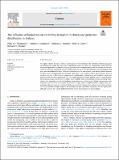Files in this item
The influence of burial rate on variability in tephra thickness and grain size distribution in Iceland
Item metadata
| dc.contributor.author | Thompson, Polly I.J. | |
| dc.contributor.author | Dugmore, Andrew J. | |
| dc.contributor.author | Newton, Anthony J. | |
| dc.contributor.author | Cutler, Nick A. | |
| dc.contributor.author | Streeter, Richard T. | |
| dc.date.accessioned | 2023-03-28T16:30:12Z | |
| dc.date.available | 2023-03-28T16:30:12Z | |
| dc.date.issued | 2023-05-15 | |
| dc.identifier | 283808918 | |
| dc.identifier | 14e9c598-d7dc-4e76-bc7c-5a4425fa1989 | |
| dc.identifier | 85148672726 | |
| dc.identifier.citation | Thompson , P I J , Dugmore , A J , Newton , A J , Cutler , N A & Streeter , R T 2023 , ' The influence of burial rate on variability in tephra thickness and grain size distribution in Iceland ' , Catena , vol. 225 , 107025 . https://doi.org/10.1016/j.catena.2023.107025 | en |
| dc.identifier.issn | 0341-8162 | |
| dc.identifier.other | RIS: urn:A1A89211457B07BBA74F462270BE7779 | |
| dc.identifier.other | ORCID: /0000-0003-2261-4540/work/131588223 | |
| dc.identifier.uri | https://hdl.handle.net/10023/27285 | |
| dc.description | Funding: This work was supported by the NERC Doctoral Training Partnership Ph.D. studentship: NE/ L002558/1 to PT. | en |
| dc.description.abstract | We explore whether the rate at which a tephra deposit is buried influences the variability (thickness and grain size distribution) within the tephra layer subsequently preserved within the stratigraphic record. This has important implications for understanding how processes of soil formation interact with the creation of a volcanic record. To assess the relationship between soil formation and the preservation of tephra layers, the thickness and grain size distribution of the Katla 1918 tephra in Iceland and the rate at which it was buried (inferred from the thickness of the overlying soil) was measured 1620 times at six locations. Tephra layer thickness does not correlate with rate of burial, but the proportion of original deposit retained does, and variations in grain size distribution are correlated with burial rate. Our results indicate that whilst medium term (i.e. years-decades) burial processes may contribute less to tephra layer variability than environmental processes operating immediately after deposition, rapid burial facilitates better preservation of the original fallout characteristics with important implications for the accurate reconstruction of past volcanic eruptions based on tephra layer characteristics. There are two key implications: firstly, sites need to be chosen where surface characteristics minimise the initial alterations of tephra deposits, and secondly sites with rapid burial will produce the best quality data, although workable data can be gathered elsewhere if areas of uncertainty are acknowledged. | |
| dc.format.extent | 13 | |
| dc.format.extent | 9803231 | |
| dc.language.iso | eng | |
| dc.relation.ispartof | Catena | en |
| dc.subject | Tephra layers | en |
| dc.subject | Sediment accumulation rates | en |
| dc.subject | Katla 1918 | en |
| dc.subject | Iceland | en |
| dc.subject | GE Environmental Sciences | en |
| dc.subject | DAS | en |
| dc.subject | MCC | en |
| dc.subject.lcc | GE | en |
| dc.title | The influence of burial rate on variability in tephra thickness and grain size distribution in Iceland | en |
| dc.type | Journal article | en |
| dc.contributor.institution | University of St Andrews. School of Geography & Sustainable Development | en |
| dc.contributor.institution | University of St Andrews. Bell-Edwards Geographic Data Institute | en |
| dc.contributor.institution | University of St Andrews. Environmental Change Research Group | en |
| dc.identifier.doi | https://doi.org/10.1016/j.catena.2023.107025 | |
| dc.description.status | Peer reviewed | en |
This item appears in the following Collection(s)
Items in the St Andrews Research Repository are protected by copyright, with all rights reserved, unless otherwise indicated.

